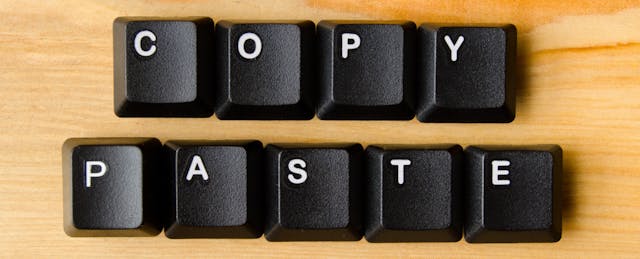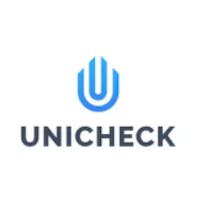Has the ubiquity of social media given plagiarism new life?
Sharing other people’s thoughts, jokes and artwork on the Internet is an everyday act. We repost so much so frequently that some platforms, such as Facebook, have been compelled to develop their own citation rules to combat plagiarism. Even so, students spend much of their time in an environment where authorship is not held in high regard.
It’s no wonder, then, that plagiarism is on the rise. In surveys of more than 70,000 high school students by the International Center for Academic Integrity, 58% admitted to plagiarism. And in her book My Word!, University of Notre Dame Professor Susan Blum writes that 68% of college students admit to “cutting and pasting material from the Internet without citation.” Whether or not the Internet is to blame, plagiarism seems to have become more socially acceptable across grade levels.
Is it really wrong?
Plagiarism is about using other people’s ideas, phrasing and other material, instead of one’s own—hence its lack of source acknowledgement. Herein lie the many risks it brings about, both for students and society as a whole.
First of all, there’s direct harm to the professionalism of the workforce. Consider this sequence: 95% high school students cheat; then they go on to undergraduate education, where 68% cheat; then to graduate school, where 43% of them still cheat. Then they join the workforce or engage in research… How many of them still cheat?
Worse yet, cheating can sometimes seem contagious. If students witness or believe that plagiarism achieves results, they can feel pressured to do the same in order to meet what they feel are unrealistic expectations. In this way, the grading system is gradually steered away from reality. A misguided reward system can push ambitious, high-performing high school students toward cheating in the belief that their plagiarized essays can earn better grades. Students who haven't cheated may in turn feel that abstaining has affected their chances of getting into a good college. This creates an unhealthy, competitive environment which actually promotes cheating by shifting the focus from education to grades.
What’s more, the act of plagiarizing cheats students out of opportunities for authentic learning. Writing assignments, for example, do not exist to keep all the fun out of kids’ lives; they are designed to teach efficiently. Writing a good essay requires a great deal of analyzing and thinking outside the box. Cheating makes it unnecessary to do so. Plagiarizing is the most toxic type of cheating because it undermines students’ intellect, creativity and confidence by removing the learning experiences that were meant to develop and encourage those natural traits.
How do we prevent it?
Here are some techniques to help prevent plagiarism—and address it when it happens:
1. Make your assignments stand out and require your students to do more than a quick Google search. Use innovative wording for your essay topics so that students can’t quickly find a sample essay that addresses your prompt. Add an analytical request to your assignment, asking students to apply the theoretical concepts they’re writing about. If you assign a paper on the features of a novel as a genre, for example, name a specific novel you’d like them to analyze for those features.
2. Talk to your students about the ethics of plagiarism, making it clear why it’s wrong and how it hurts them. Many schools have honor codes; use these as a starting point to engage students in personal conversations.
3. Teach your students the difference between copying, citing, quoting, and plagiarism. In many instances, students plagiarize without malintent, but instead because they want to use the words of someone who “put it better.”
4. Make your deadlines reasonable. A common reason for cheating is a heavy academic load and students feeling that they don’t have enough time to get their work done. Consider breaking large assignments into milestones by asking students to submit several drafts before turning in a final paper, for example. Not only does this help students pace their work, but it makes it easier for you to track their authentic writing process.
5. Teach older students thorough research practices, including how to:
- Create research portfolios.
- Include evidence, such as custom-made graphics to illustrate their claims, video and audio recordings.
- Describe their research methodology, asking them to reflect on how and why they arrived at their conclusions.
- Record their educational workflow with tools such as Google Drive, Microsoft OneDrive, and TechSmith Relay.
6. Use technology to fight cheating. Plagiarism checkers like Unicheck can be a very affordable way to do quick, yet profound, analyses of student papers. The resulting data-driven PDF reports provide evidence for any ensuing discussions about suspected plagiarism. Some plagiarism checkers are compatible with popular learning management systems, simplifying the overall process for teachers. Unicheck, specifically, is compatible with Canvas, Google Classroom, Moodle, Schoology, Sakai, NEO LMS and Blackboard.



